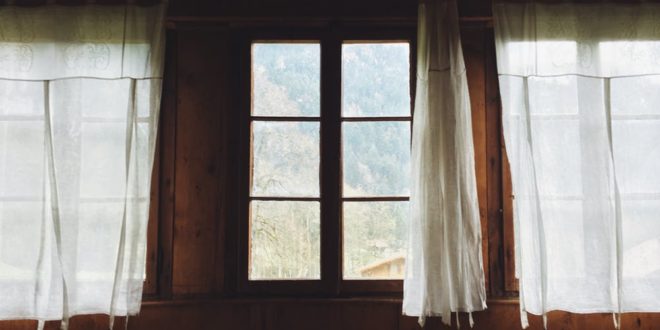We had a really bad cold snap a couple of days ago that gave me the inspiration to write on the topic I have I chosen for this feature, cold feet and low temperatures do wonders for the brain! At this time of year, cold air has started whistling around all those gaps and cracks in door and window frames. Are you tempted, like a friend of mine to rush around and seal every last tiny crack and make the house airtight? If you do you might wonder why your fire doesn’t burn or you keep falling to sleep! There is a balance between curing annoying draughts and trying to live in an airless environment.
To start with, most homes need heating to stay warm during the winter months. Solid fuel and gas heaters need air to burn correctly, without air they go out. Therefore you need airflow to come into the home, be used to burn the fire and then exit. The difference between this airflow and a draught is that you control ‘needed’ flow by the correct placement of vents. Draughts are a different ‘cup of tea’ they are annoying and unnecessary.
 Sometimes it may be difficult to trace the source of a draught around a door or window frame. An old fashioned method was to carefully use a lighted candle and move it around the frames and wait for the flame to flicker, this is NOT recommended as it’s too easy to create a fire even if you do remove any curtains or flammable material from around the window or door before you start. A much safer method (which still needs care and the removal of flammable materials) is to use a burning joss stick and carefully move it around the edge of the door or window frame (not too close of course) and when you see the smoke blow away from the door or window frame that’s where the air is coming in, it’s that easy.
Sometimes it may be difficult to trace the source of a draught around a door or window frame. An old fashioned method was to carefully use a lighted candle and move it around the frames and wait for the flame to flicker, this is NOT recommended as it’s too easy to create a fire even if you do remove any curtains or flammable material from around the window or door before you start. A much safer method (which still needs care and the removal of flammable materials) is to use a burning joss stick and carefully move it around the edge of the door or window frame (not too close of course) and when you see the smoke blow away from the door or window frame that’s where the air is coming in, it’s that easy.
Now how do we seal around doors if that’s the problem? There are varieties of draught excluders available on the market ranging from foam seal to spring loaded rubber and metal types, see the full range at your local hardware store.
Foam sealing strip is sold in a variety of lengths and thickness; the thickness is arguably of more importance than the length. This type of seal is provided with an adhesive backing and is glued around the edge of the doorframe so that when the door is closed it will make a seal to exclude draughts. If it’s too thick then you may have difficulty in closing the door after it has been applied, too thin and the wind will still whistle through. So choose the thickness carefully by trying various thickness of paper jammed in the door frame to get a measurement. To seal the bottom of the door use a spring loaded metal and rubber seal that you simply cut to size and screw to the bottom of the door. Measure the width of your door and get the size that is slightly longer.
 Windows are best sealed using the foam sealing tape, measure the thickness the same way as for the door. Before applying to either door or window, make sure that the surface is absolutely clean and dry, and then follow the instructions on the packet.
Windows are best sealed using the foam sealing tape, measure the thickness the same way as for the door. Before applying to either door or window, make sure that the surface is absolutely clean and dry, and then follow the instructions on the packet.
Finally one the best draught excluders ever is to use one of the legs of a pair of ladies tights stuffed with soft material and laid along the bottom of the door. Or even contact one of your quilting or sewing friends to make a fancy draught excluder, maybe one shaped like a snake!
Stay nice and warm!
By Chris Bennett
DIY Handyman
Read more from Chris or click here to see Chris’s Q&A page.









Join the Discussion
Type out your comment here:
You must be logged in to post a comment.